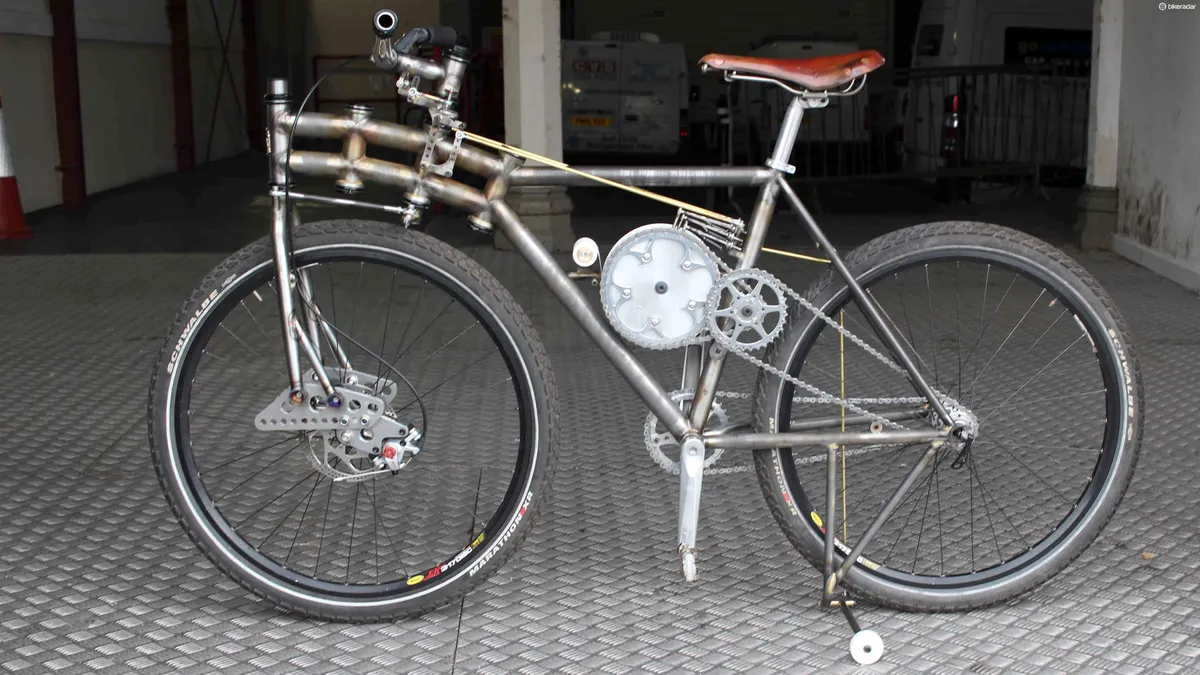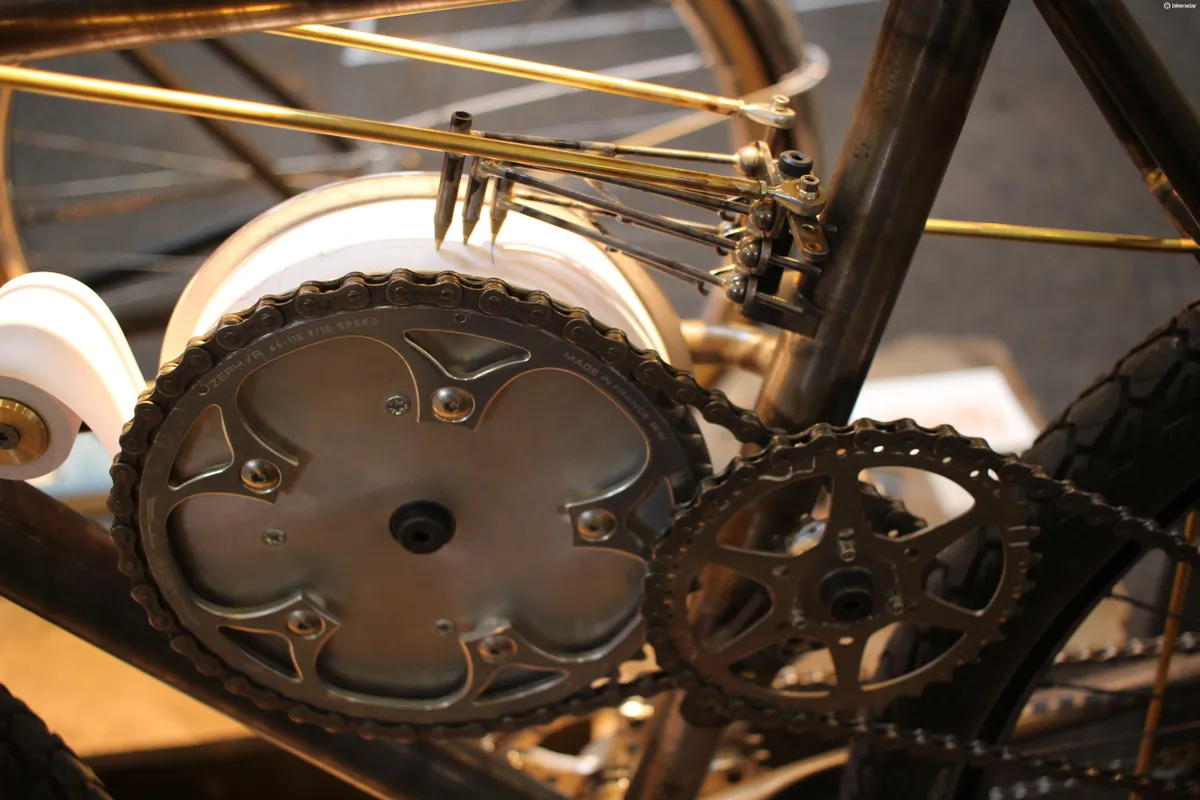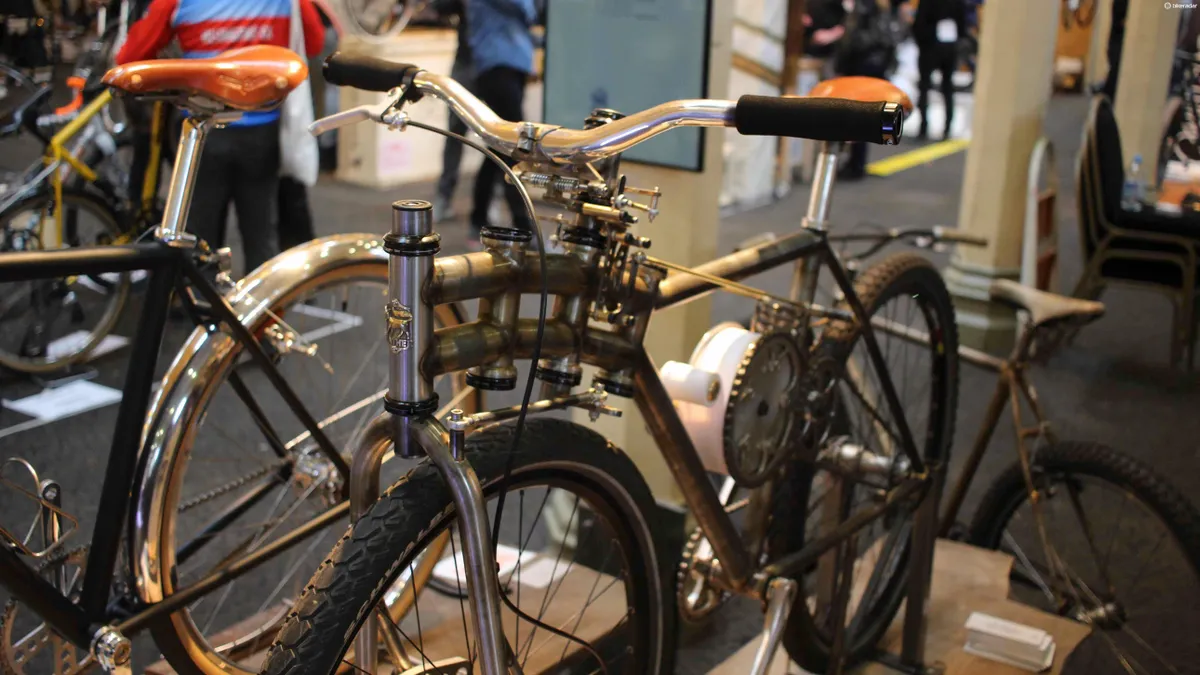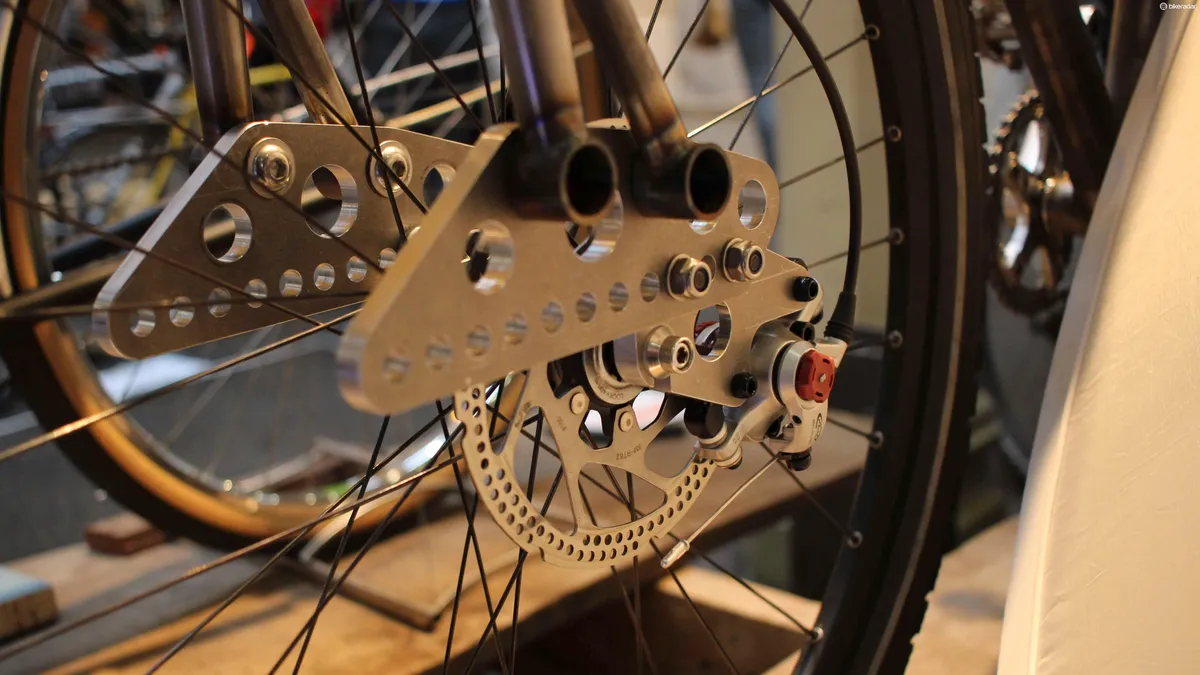We’ve spent a happy day at the Bespoked handmade bicycle show on our home turf of Bristol, and the first thing we want to tell you about is this baroque masterpiece of adjustable bike design from local outfit Robin Mather Cycles.
Unofficially called 'The Beast', its most arresting feature is what looks like a seismograph built into its belly. It’s actually a 'three-channel analogue data recorder', creator Robin Mather tells us, designed to measure the rider’s steering direction, steering torque and lean angle.
The head angle can also be adjusted from 64.5 to 90 degrees in four positions, the fork trail is adjustable from 95mm to negative 32mm, and those two adjustments are completely independent. So once you’ve tweaked the head angle and trail, you can take measurements of how you are changing your control of the bike.
Improved understanding
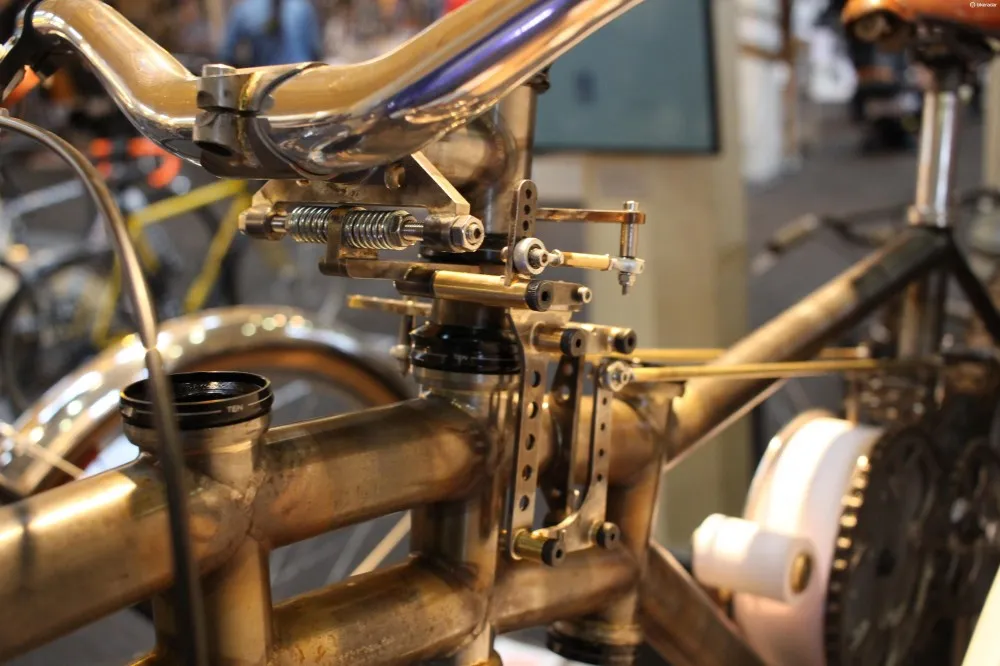
"The bicycle is a highly evolved, mature thing, but I had a feeling that I was designing bikes based on convention rather than proper understanding," said Mather. "I know that for a particular kind of bike a particular head angle works, but that’s only because it’s been done so many times before.
"I don’t think it will throw up any radical answers, but I’m hoping that it will improve my understanding of why things are the way they are."
That’s a sentiment we applaud, the kind of attitude that drives bike innovation forwards. More of this, please. Apparently the bike took around six weeks of solid work to build, plus some head scratching, then remaking. A lot of the bits have been made twice.
“Obviously there are some people who have said, 'It’s a mature technology, we’ve been doing it for years, it’s highly refined, don’t mess with it.' And they’re entitled to their opinion and they are right, but that doesn’t mean we shouldn’t try to understand it better.”
How it works
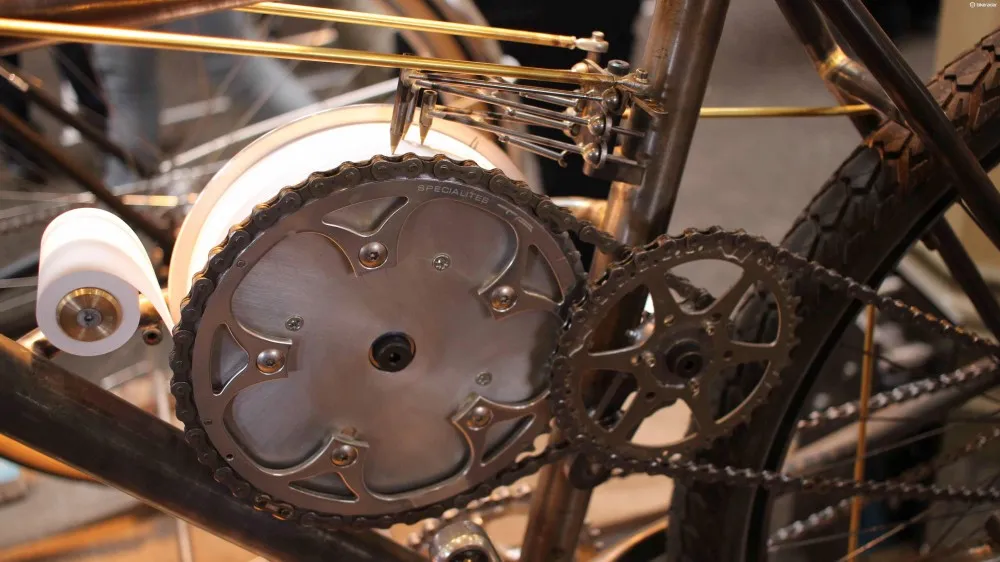
The “seismograph” is based on till roll purchased from a stationery shop and running on a drum, with cheap disposable pens chopped up and welded into position as needles. The drum is driven by the back wheel; it’s geared down so there’s about 75mm of paper drawn for every 1m the bike travels.
The three inputs are the lean angle – driven by a roller which pivots as low to the ground as possible, on the midline of the bike and as clear to the rear axle as possible – plus steering angle and steering torque.
The linkage ratio for measuring the steering angle is adjustable, with multiple holes so you can adjust the amount the pen moves and thus the sensitivity. The third input is steering torque – the stem is free to rotate on the steerer, and you’ve got an additional headset, so any force you apply to the handlebars compresses two little springs under the stem, which drives a little bellcrank, which in turns moves the pen on the paper.
Mather says that the riding position is copied straight across from his mountain bike, as he wanted to have as few other variables as possible. It is limited to smooth urban surfaces though, so it won’t be much use at informing the design of mountain bikes.
Reaction so far

So what reaction has he had so far? "People haven’t laughed openly in my face, though they might be having a chuckle elsewhere. People have said lovely things, I think there’s generally been an interest in the questions that I’m asking, and people are keen to know the answers, if there are any. It feels pretty good."
For more info on Robin Mather Cycles, head to his website.

